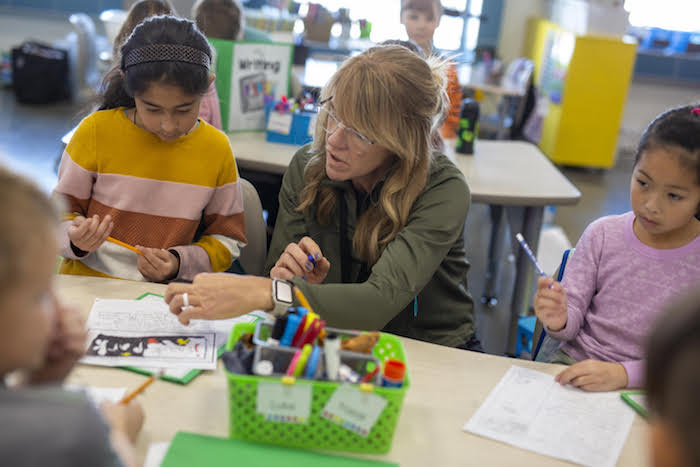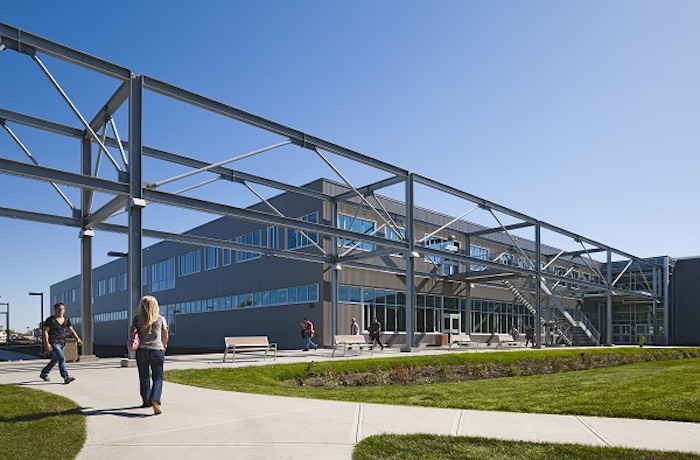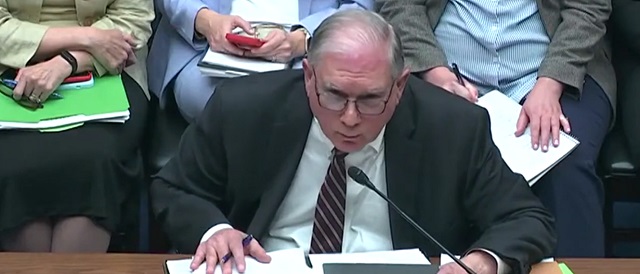Education
Red Deer Public sets its strategic direction for the next three years

Red Deer Public Schools has set its strategic direction after the Board of Trustees approved the Three Year Education Plan.
“The highest priority for our Division is the success of every student. Our focus is to ensure there is excellence in teaching and learning in every classroom across Red Deer Public Schools,” said Board Chair Nicole Buchanan. “To ensure every student reaches their full potential, our three priority areas include Literacy and Numeracy, Equity and Student Success and Completion.”
Seven proposed outcomes ensuring that all students reach their full potential will be supported by nine specific strategies. Some of these strategies include implementing and professionally staffing Student Support Rooms in schools to provide additional supportive options for students experiencing issues such as dysregulation and anxiety; implementing a comprehensive bullying intervention plan, which includes initiatives involving the prevention of bullying; the intervention process when bullying occurs; and the collaboration between parents/guardians, staff and students. The plan, which will be evaluated on an ongoing basis, will help Red Deer Public strive to continually improve its approach to addressing bullying in the schools.
“During our Community Engagement earlier this year, we heard from students at various grade levels that bullying is an issue in schools,” said Buchanan. “In response to hearing this, we will take a look at how we can prevent and provide further education about bullying. As we move forward in the upcoming school year, this initiative will involve students, staff and parents in terms of developing strategies of what this will look like.”
Work on the bullying intervention plan will begin in the 2023/2024 school year.
The implementation of Student Support Rooms in most elementary, K – 8 and middle schools for the 2023/2024 school year is also part of the Division’s Three Year Plan.
“These Student Support Rooms will be overseen by a full-time certified teacher, and will meet the needs of hundreds of students across the Division,” said Buchanan. “All students, no matter their age, grade or ability are supported in the Division, not just academically but emotionally, mentally and physically. The Student Support Rooms will be in addition to the various wrap around support services for students.”
In addition, Red Deer Public will research and explore various models to more equitably redistribute educational funding to schools, with implementation to occur during the 2024/2025 school year.
“We have schools with varying needs in our Division, so our goal is to explore a different model in which educational funds may be distributed more equitably depending on each individual schools’ needs,” said Buchanan.
The Three Year Education Plan was approved by the Board of Trustees on May 10.
Education
Schools shouldn’t sacrifice student performance to vague notions of ‘equity’

From the Fraser Institute
According to a new study published by the Fraser Institute, if Canada wants to remain competitive with emerging economies around the world, we must increase our math, science and reading scores—and not simply pursue high levels of “equity and inclusion” as the primary goal for our schools.
Indeed, highly equitable and inclusive schools—with declining PISA scores, as is currently the case in Canada—do a disservice to students and society at large.
Why? Because higher test scores translate into greater “knowledge capital”—that is, the full body of knowledge available to an economy—and boost economic growth (and, incidentally, the tax revenues that fund our schools).
Indeed, the goal should be equitable access to a quality education. And the most realistic and meaningful way to measure student progress is through PISA tests, which every three years assess the performance of 15-year-olds worldwide in core subjects of math, science and reading rather than the limited curriculum objectives used in provincial testing, which can only show progress or decline within individual school systems. In today’s world, where competition is truly global, we must know how our students and schools perform compared to their peers in other countries, especially the “Asian Tigers” of Hong Kong, Korea, Singapore and Tiawan whose rapidly growing economies have been driven by rising PISA scores.
Obviously, countries with higher test scores can teach other countries how to improve—although there are limits and some traps here. Attempting to cut and paste Singapore’s or Korea’s much more meritocratic systems of highly competitive student assessment and selection would be impractical and impolitic in Canada. Even so, policymakers should consider reinstating more meaningful meritocratic norms in Canadian schools to encourage and recognize academic achievement. Nothing succeeds like success, except recognized and rewarded success.
Closer to home, other provinces could benefit from considering why Quebec is such a stellar performer in math and why Alberta has the highest overall PISA test score average of all provinces.
But fair warning, recent attempts at school improvement in Canada show that top-down one-size-fits-all changes—including extending compulsory attendance, reducing average class size and tinkering with course content—have had little positive effect on student performance, although they may please teacher unions. If policymakers want to achieve more equitable success for more students, they should introduce more flexibility, school autonomy and choice into our top-heavy centrally regulated school systems. In this respect it may be no accident that the three highest performing, mid-spending provincial K-12 education systems (Alberta, Quebec and Ontario) offer relatively high levels of school choice, although of quite different kinds.
Equity and inclusion are noble goals, but they shouldn’t interfere with student progress. There’s too much at stake, for students and the country.
Author:
Alberta
Expansion planned for Centre for Innovation in Manufacturing at Red Deer Polytechnic

Investing in innovation at Red Deer Polytechnic |
Alberta’s government is expanding student capacity and creating a modern learning environment at Red Deer Polytechnic that will help graduates succeed in the economy of tomorrow.
To support emerging opportunities for students, Alberta’s government will invest $12.9 million to expand the Centre for Innovation in Manufacturing Technology Access Centre (CIM-TAC) at Red Deer Polytechnic (RDP). CIM-TAC is an applied research and innovation centre that gives companies access to state-of-the-art prototyping and manufacturing equipment, along with a multi-disciplinary team with the expertise to turn brilliant ideas into market-ready products.
As Alberta’s economy grows and diversifies, job creators will increasingly seek employees with the skills required to work in advanced manufacturing.
Construction will begin in early 2025 and will increase the centre’s applied research, education and training capacity. The expanded CIM-TAC will grow to provide work-integrated learning opportunities for an estimated 450 post-secondary students and training through workshops and events to an additional 2,000 students annually by 2030. Additionally, more than 500 junior and senior high school students will take part in dual credit programs at the CIM-TAC.
“Investing in this expansion of CIM-TAC will give students at RDP access to cutting-edge technology and skills to succeed in the economy of tomorrow. The strategic investments we’re making in Budget 2024 are part of a forward-looking path to support the goals of our post-secondary institutions, grow Alberta’s economy and create jobs.”
“The expansion will allow Alberta-based manufacturers across multiple sectors to have greater ability to develop, test and scale their ideas. Students will be engaged at the forefront of made-in-Alberta technologies and manufacturing solutions.This investment will help meet high demand from entrepreneurs and industry for applied research and will take the facility beyond its current capabilities to become an advanced technology training and hands-on learning centre.”
“This expansion project will build on the CIM-TAC’s 15 years of success and leverage the centre’s industry partnerships and manufacturing expertise to provide even more capacity for applied research, as well as education, training and work-integrated learning opportunities for students. We thank the Government of Alberta for this investment that will benefit not only RDP students and researchers, but also the entire central Alberta region and its critical industries like health care, agriculture, energy and construction.”
“Manufacturing and advanced manufacturing are driving job-creation, economic growth and made-in-Alberta solutions that improve the lives of people around the world and right here at home. The funding to expand RDP’s CIM-TAC is an investment that will allow Alberta companies greater access to the tools, technology and next generation of skilled talent that will allow our industry to solve real-world challenges, develop better products and ultimately increase productivity.”
Quick facts
- The expansion of CIM-TAC at RDP will support a variety of sectors through advanced manufacturing capabilities, including energy innovation, transportation, aviation and agriculture. The centre will also support RDP’s future expansion into more medical device manufacturing and health-care innovations to support both patients and providers.
- RDP’s expansion of the CIM-TAC will grow the facility’s footprint from 15,000 square feet to 25,000 square feet.
- The CIM-TAC currently houses $7.6 million of advanced manufacturing equipment.
- In 2022, RDP attracted more than $2 million in applied research investment. RDP also completed 64 projects for 57 companies and participated in more than 1,300 engagements with industry partners.
- Since the CIM-TAC’s inception in 2009, RDP has supported more than 300 industry partners (including repeat clients).
-

 Brownstone Institute17 hours ago
Brownstone Institute17 hours agoMusk Wins Latest Censorship Battle in Australia
-

 Brownstone Institute16 hours ago
Brownstone Institute16 hours agoWHO Accords Warrant Sovereignty Concern
-

 COVID-1919 hours ago
COVID-1919 hours agoTucker Carlson and NFL star Aaron Rodgers discuss Bill Gates, COVID-19, US Deep State
-

 Food11 hours ago
Food11 hours agoThe Bee-pocalypse: Another Scare Story the Media Got Wrong
-

 COVID-1918 hours ago
COVID-1918 hours agoTop Fauci Aide Allegedly Learned To Make ‘Smoking Gun’ Emails ‘Disappear,’ Testimony Reveals
-

 COVID-1915 hours ago
COVID-1915 hours agoMalaysian doctor goes viral after apologizing for administering COVID shots
-

 Censorship Industrial Complex14 hours ago
Censorship Industrial Complex14 hours agoAustralia passes digital ID bill, raising fears of government surveillance without accountability
-

 Energy20 hours ago
Energy20 hours agoTech giants’ self-made AI energy crisis




